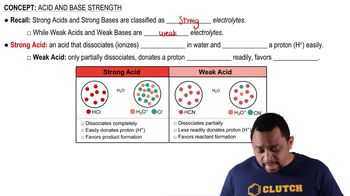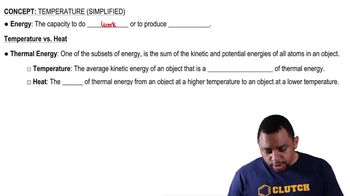Textbook Question
The dissociation of water into H₃O⁺ and OH⁻ ions depends on temperature. At 0 °C the [H₃O⁺] = 3.38 x 10⁻⁸ M, at 25 °C the [H₃O⁺] = 1.00 x 10⁻⁷ M, and at 50 °C the [H₃O⁺] = 2.34 x 10⁻⁷ M.Is the dissociation of water endothermic or exothermic?






